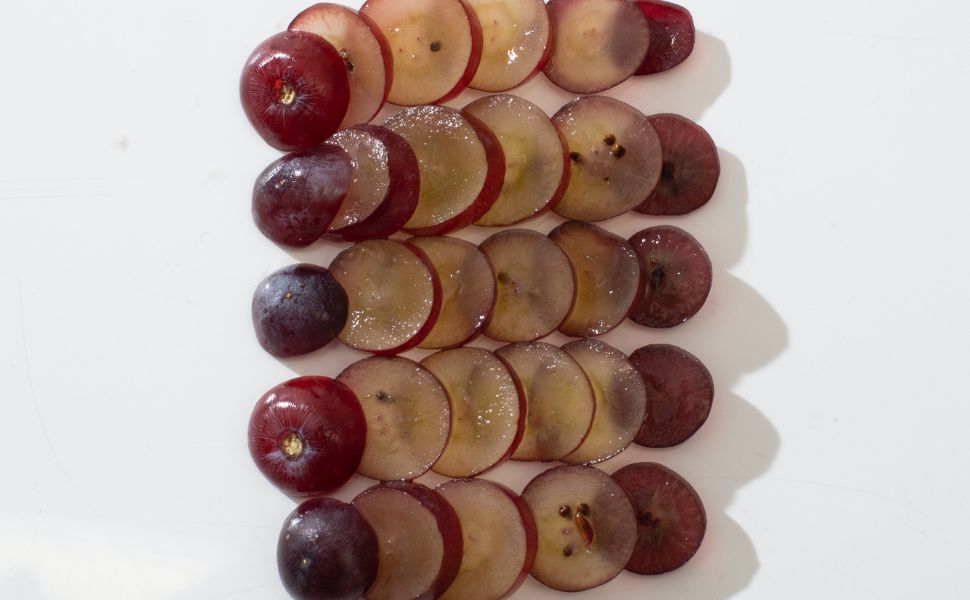By following these guidelines on how to cut grapes for a baby, you’ll be creating a safe and enjoyable eating environment for your little one. Always prioritize their safety and consult your pediatrician if you have any concerns about their diet or choking hazards.
Introducing solid foods to your baby is an exciting milestone, but it also comes with important responsibilities, especially when it comes to food safety. Grapes, while a nutritious and tasty option, can pose a choking hazard for infants and young children if not prepared and served correctly. Learning how to cut grapes for baby is an essential skill that ensures their safety while enjoying this wholesome fruit.
Table of Contents
- Understanding the Choking Hazard
- How to cut grapes for a baby – Step-by-Step Guide
- How do you serve grapes for baby led weaning?

Understanding the Choking Hazard
Grapes are naturally round and small, making them a potential choking hazard for babies and toddlers. Their smooth texture and size can obstruct a child’s airway if swallowed whole, leading to serious complications. For this reason, it’s crucial to take the necessary precautions and properly cut grapes for baby before serving them to your little one.
Related: BLW and choking
Choosing the Right Grapes
When selecting grapes for your baby, opt for those with a firm texture and minimal wrinkles. This indicates that they are fresh and less likely to be mushy, which could increase the risk of choking. Additionally, consider choosing seedless grapes to eliminate the possibility of your baby accidentally ingesting seeds.
The Recommended Age
The American Academy of Pediatrics (AAP) suggests introducing grapes to your baby around 8 to 12 months of age. At this stage, your baby’s oral motor skills are better developed, reducing the risk of choking. However, always consult your pediatrician before introducing any new food into your baby’s diet.
How to cut grapes for a baby – Step-by-Step Guide
- Wash Thoroughly: Before cutting grapes, wash them thoroughly under cold running water to remove any dirt, residues, or pesticides.
- Gather Supplies: You’ll need a clean cutting board, a sharp knife, and a bowl to place the cut grapes in.
- Halve or Quarter: To make grapes safe for your baby to eat, cut them lengthwise. Start by holding a grape firmly between your fingers and slicing it in half using a sharp knife. For extra precaution, you can even cut each half into quarters.
- Check for Seeds: While seedless grapes are preferred, it’s always a good practice to double-check for any remaining seeds after cutting. Remove any seeds you come across.
- Size Matters: Aim for grape pieces that are small enough for your baby to handle and chew without the risk of choking. Generally, pieces should be about the size of your baby’s fingertip.
- Serve Immediately: Once you’ve cut the grapes into safe portions, serve them to your baby right away. This prevents any potential hazards that might arise from leaving cut grapes for baby unattended.
- Supervision is Key: Always supervise your baby while they’re eating, regardless of the type of food. Be present to provide assistance if needed.
Alternative Serving Suggestions
If you’re still concerned about the choking hazard, you can consider other ways to introduce cut grapes for baby:
- Grape Puree: Blend grapes into a smooth puree, which eliminates the risk of choking. However, make sure the puree has a safe consistency for your baby’s age.
- Grape Teether: Place halved grapes inside a mesh feeder or silicone teething feeder. This allows your baby to enjoy the flavor and benefits of grapes without the risk of choking.

How do you serve grapes for baby led weaning?
Serving grapes for baby-led weaning requires careful consideration of your baby’s developmental stage and safety. By following these steps and prioritizing your baby’s ability to self-feed and explore, you can make the experience of introducing grapes a positive and enjoyable one. Remember that safety is paramount, so always supervise your baby during mealtimes and stay informed about best practices for baby-led weaning. Follow this step-by-step guide to serve grapes for baby-led weaning in a safe and enjoyable way:
1. Wait for the Right Time: Before introducing grapes or any solid foods, ensure that your baby is developmentally ready. Most experts recommend starting baby-led weaning around 6 months of age, when babies can sit up with minimal support, show interest in food, and have good hand-eye coordination.
2. Choose the Right Grapes: Opt for seedless grapes with a firm texture. This reduces the risk of choking and ensures a better eating experience for your baby. Wash the grapes thoroughly before serving.
3. Cut Grapes Safely: Instead of cut grapes for baby into small pieces, which can increase the risk of choking, consider modifying their shape to make them safer. You can either cut grapes lengthwise into halves or quarters, depending on their size. These elongated pieces are easier for your baby to grasp and chew.
4. Offer Whole Grapes for Exploration: As an alternative, you can also offer whole grapes with the skin intact for your baby to explore. The skin provides a natural grip and can help your baby practice their pincer grasp. However, ensure close supervision and be prepared to intervene if necessary.
5. Use a Mesh Feeder or Silicone Teether: To further mitigate the choking risk, you can place halved grapes inside a mesh feeder or silicone teething feeder. These tools allow your baby to suck and chew on the grape without the risk of large pieces breaking off. This is particularly useful for early stages of baby-led weaning.
6. Encourage Self-Feeding: Baby-led weaning is all about letting your baby take the lead in exploring and feeding themselves. Place the prepared grapes within your baby’s reach and allow them to pick up, examine, and bring the food to their mouth. This encourages the development of fine motor skills and self-regulation of food intake.
7. Stay Present and Supervise: Always be present and supervise your baby while they’re eating. This is essential to intervene if they experience any difficulty or choking. Avoid distractions during mealtimes and focus on creating a calm and attentive eating environment.
8. Gradually Introduce Different Textures: As your baby becomes more comfortable with eating grapes and other foods, you can gradually introduce various textures and flavors to their diet. This helps them develop a well-rounded palate and adapt to different foods.
9. Offer Water with Meals: Alongside solid foods, offer water in an age-appropriate cup to keep your baby hydrated during meals. This also helps wash down any food particles and ensures a comfortable eating experience.
Related: BLW signs of readiness

